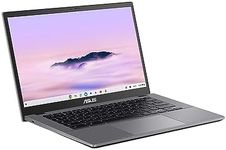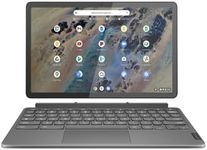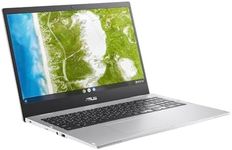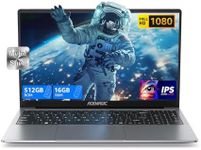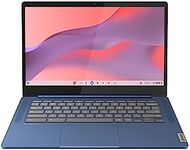Buying Guide for the Best Chromebooks For Students
Choosing the right Chromebook for students involves considering several key factors that will ensure the device meets their educational needs. Chromebooks are known for their simplicity, security, and affordability, making them a popular choice for students. However, not all Chromebooks are created equal, and it's important to understand the specifications that will best support a student's learning experience. Here are the key specs to consider and how to navigate them to find the best fit for a student.ProcessorThe processor is the brain of the Chromebook, determining how fast and efficiently it can run applications and handle tasks. For students, a mid-range processor like an Intel Celeron or an AMD A-series is usually sufficient for basic tasks such as web browsing, word processing, and video streaming. For more demanding tasks like coding or running multiple applications simultaneously, a more powerful processor like an Intel Core i3 or i5 might be necessary. Consider the student's workload and choose a processor that can handle their needs without lag.
RAMRAM (Random Access Memory) affects how many applications can run at the same time and how quickly they operate. For most students, 4GB of RAM is adequate for everyday tasks like browsing the web, using Google Docs, and streaming videos. However, if the student needs to run more intensive applications or multitask frequently, opting for 8GB of RAM can provide a smoother experience. Assess the student's typical usage to determine the right amount of RAM.
StorageStorage capacity determines how much data, such as documents, photos, and videos, the Chromebook can hold. Chromebooks often come with 32GB or 64GB of storage, which is usually enough for students who primarily use cloud-based services like Google Drive. If the student needs to store a lot of files locally or install numerous apps, consider a model with 128GB of storage or more. Think about the student's storage habits and whether they rely more on cloud storage or local storage.
Display Size and QualityThe display size and quality can impact the student's comfort and productivity. Chromebooks typically range from 11 to 15 inches in screen size. An 11-inch screen is more portable and lightweight, making it ideal for younger students or those who need to carry their device around frequently. A 13 to 15-inch screen offers more viewing space, which can be beneficial for older students or those who need to work on detailed projects. Additionally, consider the display resolution; a Full HD (1920x1080) resolution provides a clearer and more comfortable viewing experience, especially for extended use.
Battery LifeBattery life is crucial for students who need to use their Chromebook throughout the school day without access to a charger. Look for a Chromebook that offers at least 8 to 10 hours of battery life to ensure it can last through classes, homework sessions, and extracurricular activities. Consider the student's daily schedule and choose a model with a battery life that aligns with their needs.
Build Quality and DurabilityStudents often carry their Chromebooks in backpacks and use them in various environments, so durability is important. Look for models with rugged designs, spill-resistant keyboards, and reinforced hinges to withstand the wear and tear of daily use. If the student is younger or tends to be rough on their devices, prioritize a Chromebook with enhanced durability features.
Connectivity OptionsConnectivity options such as USB ports, HDMI, and SD card slots can enhance the Chromebook's versatility. Ensure the Chromebook has enough ports to connect peripherals like a mouse, external storage, or a monitor. Additionally, consider models with the latest Wi-Fi standards (Wi-Fi 5 or Wi-Fi 6) for faster and more reliable internet connections, which are essential for online learning and research.
Operating System and UpdatesChromebooks run on Chrome OS, which is known for its simplicity and security. It's important to choose a model that will receive regular updates from Google to ensure it stays secure and performs well over time. Check the Auto Update Expiration (AUE) date, which indicates how long the device will receive updates. Opt for a Chromebook with a longer AUE date to maximize its useful lifespan.
